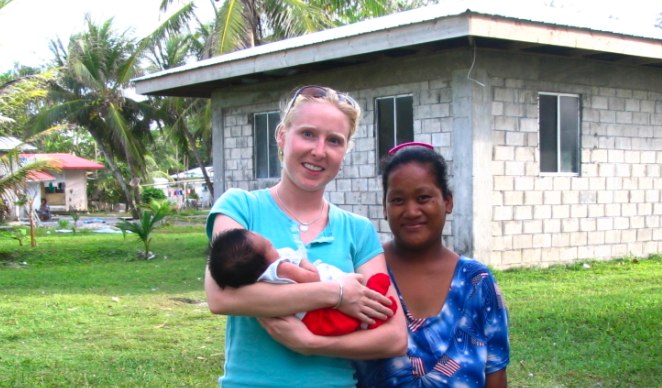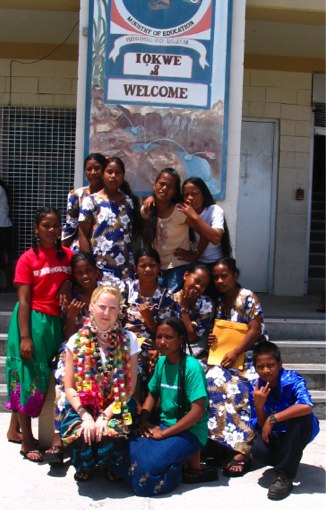
The Context
I made my home on a 3.4 square-mile atoll for a year while I volunteered as a teacher and newspaper editor. On many parts of Majuro, the capital of the Marshall Islands, a 120-degree swivel of my head would provide a view of the lagoon and the ocean.
The beginning of this story is a bit hackneyed: I left a nice job at the U.S. Chamber of Commerce (and all the perks that come with it) to get experience in international development because I thought it was the way that I wanted to change the world. While teaching eighth grade (I have a lifetime of stories from my classroom hours), I volunteered as a newspaper editor at the country’s sole newspaper to gain exposure to the local development projects sponsored by multinational NGOs and the U.S., Taiwanese, Australian and Japanese governments.
The Observation
Well intentioned governments and NGOs spent a lot of money to carefully research and recommend solutions. They bound their recommendations in reports that gathered dust in gray metal filing cabinets. Their work produced no long-term impact.
I saw this cycle repeated. It didn’t matter if the project was backed by a Taiwanese NGO or the Australian government, the approach and results were the same. After the project or building was developed and the consultants left, things would return to status quo. The problem was a lack of local buy-in and cultural relevance. Sometimes the project was never the right fit, was missing pieces (a library for elementary school students with chapter books and encyclopedias) or lacked a local champion to maintain it.
The Application
Partnerships are critical. Yes, corporate philanthropic dollars are valuable, but corporate philanthropy as a complete act warrants the makeover it’s getting. Money (even the best-intentioned) is only one part of the solution. Truly understanding the need (which takes unbiased listening), developing equal partnerships, testing and modifying and designing a sustainability plan are as important to a program’s success as the company’s (or government and NGO’s) check. You need them all.






 I'm Olivia Khalili. I created Cause Capitalism to show you how to grow your business by incorporating a social mission.
I'm Olivia Khalili. I created Cause Capitalism to show you how to grow your business by incorporating a social mission. 

Oliv,
i could have read much more about this – both observations and applications. For example:”equal partnership” what do you mean by this? How is it achieved?
Short, but provocative!
mary
Mary,
Great questions. I was thinking about your question and my use of the word ‘equal.’ I was trying to emphasize that the partnerships need to be as balanced as possible. Like a marriage or friendship, it can’t sustain and flourish if one person is pushes his/her agenda without understanding the other partner’s needs. In this case, the NGO (and company, in the application of this story) should look to come in as an equal half who can both contribute, receive and learn (i.e., not with the attitude we-know-what’s-best-and-we-have-the-money, thus-we-call-the-shots).
Thanks for your sharp questions, Mary.